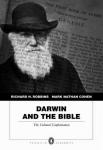The main theme of this book is clearly identified in its subtitle. To reflect the cultural conflict theme, the editors have invited authors with a variety of perspectives on the history and diversity of life and how best to account for it. The volume is polyvocal; the editors clearly did not constrain the authors significantly with a particular editorial perspective, even though the editors' perspectives are made quite clear in the introduction and conclusions.
The book is divided into three sections. The first allows proponents of the sciences and of various creationist — including "intelligent design" — models to make affirmative cases for their positions. There is a nice variety of ideas here, though there are some chapters that fall short. For example, though Stephen Jay Gould's NOMA construct is an important perspective, much of the material in the chapter is outdated. And Phillip Johnson's chapter — much abbreviated due to illness — fails to deliver much beyond presenting the basic claims of "intelligent design" (ID) and reads like little more than slogans. Furthermore, the lack of an exposition of a young-earth creationism is a glaring hole. Although young-earth creationists are perhaps not currently in the forefront politically, they are still a significant force on the "Bible" side of the divide.
Still, most of the material here is well presented and worth reading. Cohen's chapter — on the nature of science and the ways in which certain ideas and procedures that make science successful, such as uniformitarianism, have been demonized by opponents — is insightful. He makes clear one important point that is often muddied by ID proponents: even "intelligent" human behavior is still bound by the operation of natural laws. Therefore, it makes a poor analogy to their design arguments, which (despite their disavowals to the contrary) involve the supernatural.
Walter Hearn's chapter provides a voice seldom heard in the "controversy" but which is not an uncommon position: that of the evangelical Christian who accepts the power of natural laws and processes to produce complex biological outcomes. However, this chapter is mostly uninformative —much of it spent in defining and redefining terms, instead of addressing the issues.

Hewlett and Peters clarify the main issues and lay out the terrain that any victor must claim: the nature and definition of science. They clearly characterize the value of evolutionary theory as "a model that gives directions for scientists to pursue research" rather than an "absolute truth" (p 69). They also decry Darwinism — which they define as the various ideologies that emerge from the scientific theory and not intrinsic (or often even related) to the scientific process.
The second section focuses on historical developments. Jonathan Marks provides both a strong historical perspective as well as additional clarification on the nature and meaning of science: "This is not about whether we came from apes, but about how we draw scientific inferences" (p 95). Co-editor Robbins's chapter is a valuable rehabilitation of the reputation of William Jennings Bryan. Robbins points out that Bryan's concern was that Darwinism might lead to inequality, war, and social conflict. His analysis of the state of Darwinism in the 1920s — including Social Darwinism and eugenics — makes Bryan a more sympathetic character than pro-science readers may be accustomed to.
The first of Larson's chapters adds the necessary "post-Darwinian" development of evolutionary science. While anti-evolutionists often invoke Darwin and "Darwinism" in their critiques, this chapter makes clear how much of modern evolutionary science is non-Darwinian. A chapter by the late Ernst Mayr shows why Darwin's original construction still persists and provides the underpinning for modern evolutionary science. By contrast, NCSE's Glenn Branch illustrates the worldwide pattern of how opposition to evolutionary science is maintained and spread.
The final section focuses on issues that arise from evolution in the classroom. Larson's second contribution to this volume explores the conflict between tradition and modernity. It was not evolution itself that was responsible for the conflict, argues Larson, but intellectual and cultural trends that focused on "rational, naturalistic modes of analysis" (p 156) as the basis for understanding and solving the world's problems. This naturalistic focus is, of course, the main irritant that ID proponents want to remove from science, but Larson traces the effects of methodological naturalism on the development of anti-evolutionism throughout the 20th and into the 21st century. His concluding statement is realistic, if pessimistic: "If history is any guide, dark clouds remain on the horizon" (p 165).
Steve Randak adds a perspective that only a high-school biology teacher could provide. Picking up on the idea of "local control" in Larson's first chapter, he shows how it can play out in fervent opposition to evolution, even in a school district with a strong association with a major research university. His chapter perhaps illustrates what Larson meant by his closing remark. Next, one of those students with a strong anti-evolutionary upbringing, Laura Perras, tries to make sense of the scientific theories she is learning in university. This is a valuable voice to add to the conversation, but it is still rather underdeveloped in comparison to the others in the book.
It is in the conclusions that the co-editors' own perspectives become clearest. It is important, they urge, to separate science as the process of inquiry from science as the cultural institution (just as it is important to separate faith as a framework to understand the meaning, value, and purpose in life from faith as embodied in religious denominations). In one sense, this is a restatement and extension of Gould's NOMA construction, and one that recognizes that both science and religion are intricately woven into the fabric of our culture. Cohen seems to be calling for science and religion to find that place in contemporary culture where they can join their valuable contributions. And yet, Larson's warning still hangs over this aspiration.
